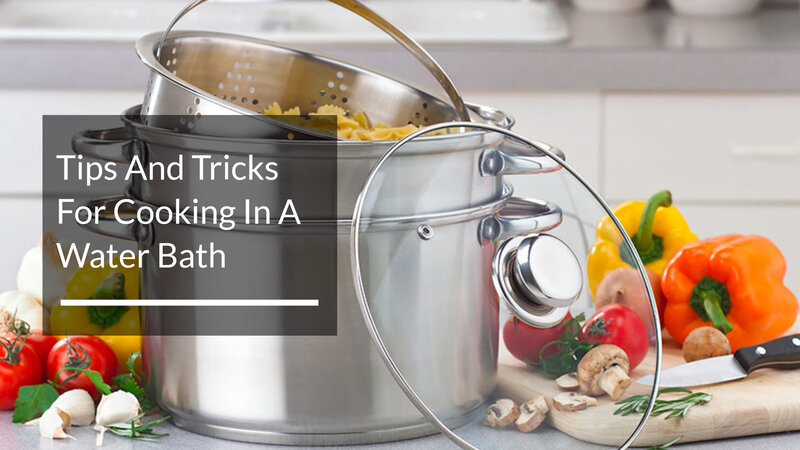 Bain-marie is a cooking technique widely used for many years, being a simple and healthy traditional cooking method that works through conduction cooking. This means that food is prepared through the heat and steam given off by the water, which will act as a heat conductor.
Bain-marie is a cooking technique widely used for many years, being a simple and healthy traditional cooking method that works through conduction cooking. This means that food is prepared through the heat and steam given off by the water, which will act as a heat conductor.
It is a technique that is used especially in delicate recipes since it provides a constant and stable temperature, which means that cooked food does not burn or stick to the surface of the pot or saucepan where it is prepared.
In this way, we will find that the water bath is used assiduously to melt chocolates or butter, which is a direct fire that could burn and obtain a horrible flavor, as well as to make sauces, creams, and some desserts such as glass-ceramic flans, gas stoves. or in the oven.
We say that it is a healthy technique, it is because, when cooked with the heat and steam of the water itself, all the properties and nutritional values of the ingredients and foods you use are respected and preserved.
Here are some tips and tricks that you should keep in mind if you want to make your Bain-Marie recipes successfully.
1. Watch the amount of water
It is one of the most important tips that you should keep in mind when making your recipes in a water bath since excess water can cause the water to boil and cause splashes that could end up causing significant burns if they reach your skin. It is recommended that you only fill the pot or saucepan (preferably the latter) to half its surface, without ever overflowing.
2. Be careful with the water temperature
To properly perform this cooking technique, the water will need to be boiling. Once you have the water at the correct boil, you must introduce the bowl with the ingredient to cook.
If you do it before the water is boiling, the only thing you will do is cook the ingredient incorrectly and cause the technique to be not applied properly, causing the expected result not to be achieved.
If you have doubts about the ideal boiling temperature of the water, go to google, search for the recipe and the cook will explain it in the article on how much or how many degrees water boils is required.
3. Heat resistant containers
We know this seems like a no-brainer, but we prefer to point out this fact. Keep in mind that you are going to put the container in boiling water, so you will need it to be heat resistant, otherwise, it could melt slightly imperceptibly and cause your food to become contaminated with substances that are harmful to people’s health.
4. Container without reaching the bottom
The bottom of the saucepan or the pot in which you have boiling water will be the hottest part of the entire container, so it is strongly recommended that the bowl you introduce never comes to rest on this bottom, but rather remains suspended a few inches above.
In this way, you will be cooking the ingredient above what is desired and there will be no problems of sticking to the surface of the bowl.
5. Check the doneness
There are people who have been in the kitchen for many years and are true chefs who are experts at determining at a glance when the product has reached the required doneness.
If this is not your case, the best thing you can do is dip the blade of a knife or fork into the mixture. When the cutlery comes out clean, that means the cooking is perfect. If, when inserting and removing it, it comes out a little stained.
This will indicate that it is still raw inside, so it will not be advisable to remove it from the water yet. This advice is very applicable to recipes for sweets and desserts, such as puddings or custards.




1 Response
[…] Bain-marie is a cooking technique widely used for many years, being a simple and healthy traditional cooking method that works through conduction cooking. […]